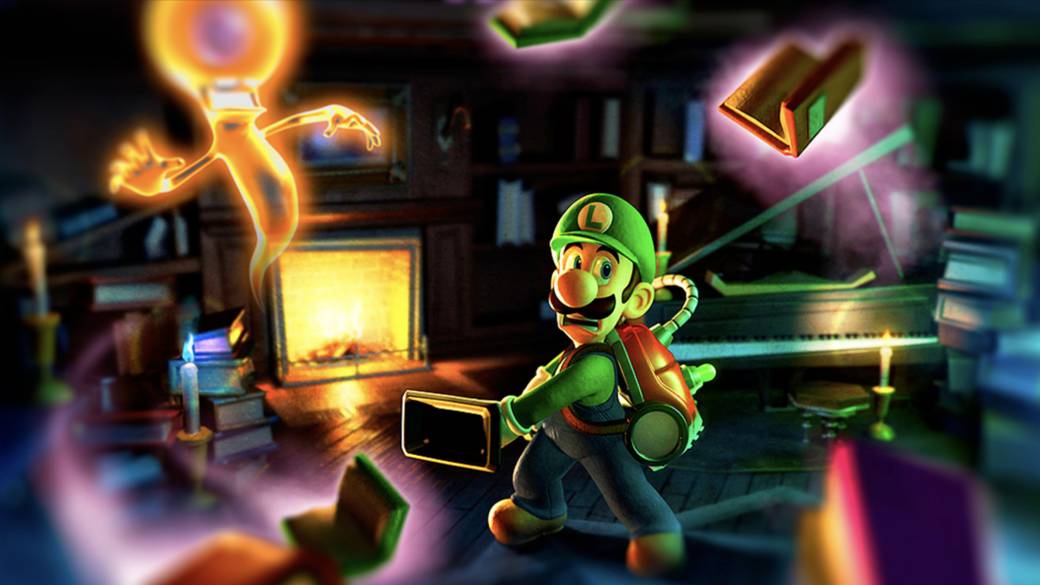
Luigi's Mansion 3 continues on Switch the saga with which Luigi became more than Mario's brother. We analyze the keys to a perfect formula for Luigi and only for Luigi.
In his debut in the Mario Bros. arcade, Luigi was little more than an alternative multiplayer sprite. Only Mario was distinguished by a greenish tone that, far from being assigned as a distinctive feature, was chosen due to the technical limitations of NES when displaying several colors on the screen. Nintendo borrowed the green from the Koopa shell, so it was not even conceived of an exclusive color for the mustache second. The Mario Bros. arcade did not constitute its first appearance, since before it appeared in the version of this one for the ancient Game & Watch, but it is the game that best encapsulates Luigi's fate. The eared plumber is not born next to Mario, as equals, but as a complement to the shadow of Nintendo's favorite. In fact, its name derives from the Japanese word Ruiji, which may well be translated as "similar." Almost all of his career has revolved around that accessory role, of mere comparsa and of random inheritances.
Even one of Luigi's defining features, the altitude and cadence of his jumps, is the result of the reskin made from the protagonist of Yume Koujou Doki Doki Panic !, the Japanese title that served as the basis for Super Mario Bros. 2 outside Japan . There are those who place the origin of this skill in The Lost Levels, but in the absence of official confirmation, knowing that Doki Doki Panic! Born as a prototype of Mario with vertical platform and knowing the purpose of this article, let's stay with the first version. The fact that Luigi did not enjoy his own sprite in Super Mario World until the arrival of All Stars reinforces the thesis that the youngest of the plumbers has always lived on the crumbs left by his brother.
Personality, Luigi's big leap
All this, however, encouraged Luigi to develop a personality very different from Mario's. Faced with his brother's untold courage and determination, he was more shy and scary. It is already appreciated from Mario is Missing !, second title that starred after his first leadership in the Luigi’s Hammer Toss of Game & Watch, but also in the different party-games with the seal of Mario. The ideal traits for a hero may not seem like it, but the truth is that Luigi's fears made him a more expressive and nuanced character. Mario always reacts to problems in a resolute and unforgiving way, with little room for doubt and fear, which makes him an archetypal and rather flat hero. Instead, Luigi has a wide range of emotions that he does not hesitate to express when he feels terror or uncertainty. In Luigi’s Mansion he does not face ghosts because he is a hero, but is a hero for daring to overcome and catch his fears. In that often nuance lies the difference between Mario and Luigi: the ability to overcome and evolve the second.
Instead of distinguishing himself from mechanics – that came later – Luigi gained his own thanks to his personality. On this the whole idea of Luigi’s Mansion orbits and therefore we speak of a unique proposal; the perfect game for Luigi and only for Luigi. It is logical that he emphasized his emotions and his expressive capacity, differential virtues of the eared lampista. By enclosing the most scary of his characters in a gloomy building full of ghosts, Nintendo EAD sought hyperbole, an excessive reaction that underlined Luigi's character. Always with the family seal of the Great N, the work alternates between horror and humor so that the fan-made ghostbuster's range of emotions is as wide as possible. Only then would it be recognizable and more than just an olive clone of his relative. Together with Mario, this attitude would become a kind of meme, the classic comic counterpoint and reloaded to relax the player and reinforce the heroism of the Kyoto mascot. In his absence, however, Luigi's personality generates empathy, since our hypothetical reaction at a similar juncture would be closer to his than Mario's. At the same time, reinforce the horrendous of the mansion and bear fruit in humor thanks to Luigi, not at his expense. For the Italian translation of his name to prevail, the one that considers him a great warrior, instead of the Japanese one, who treats him with imitation nimia, Luigi must go through a process plagued by scares, saliva swallows and self-improvement. Mario wouldn't need it; for him it would be a process, another world. And so he would play the role of hero of this franchise worse.
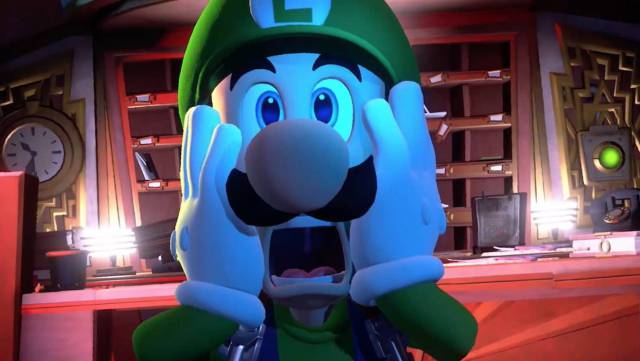
The GameCube title, which was originally devised for Nintendo 64, is raised around its protagonist, its sensitivity and its fearful character. In fact, its lack of presence in the fifth generation of consoles is justified, among other reasons, by the need for a technical leap capable of representing more successful and convincing emotions and scenarios. This video game would work worse with less haze in his mansion and less expressiveness in the gestures of his main actor. Argument, atmosphere and the whole playable concept are designed and work to generate a differential value around Luigi, so no other Nintendo character would generate the same effect. Moreover, we can think of few works with the seal of quality of the Great N that are better suited to its protagonist and vice versa. Luigi and the mansion make up a perfect binomial, a beautifully greased gear.
A lesson in nintendero design
Dedicating a few paragraphs to clarify and clarify this idea is key to the end of the article, understanding the reasons behind Luigi’s Mansion, because it slightly demarcates from Nintendo's design logic. The usual thing is to start from a mechanic and build a complete universe around it. To some extent, this is what happens with Luigi’s Mansion, although differently from other works. Splatoon is the most recent case, as follows from the interviews and conferences of its creators. Shintaro Sato, one of those responsible for the development of Animal Crossing, created in 2013 a four-on-four game in which to paint more territory than the rival to win. The ink was the core of Splatoon, which was later nurtured with skills such as scrolling through it and hiding in that mussel. Only with the well-defined mechanical base and not before the details were finalized on who and where, the inklings and their world. Mechanics before script. Pure Nintendo.
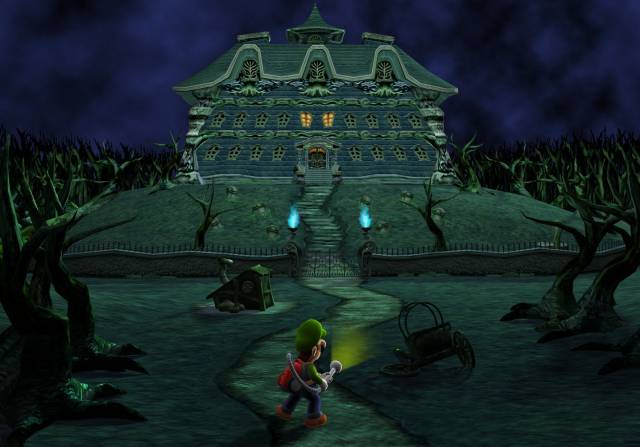
Luigi’s Mansion was born as a prototype to offer a somewhat more mature Mario universe title, as Miyamoto suggests in an interview with Shigesato Itoi. That implies from dispensing with the victory gesture that celebrates the end of a level in Super Mario World to a different type of game, less colorful and childish. The intention of the creative and his team was to add another adventure to Mario's curriculum with smaller levels instead of a large mansion. The jump to GameCube and its pseudo-terrifying approach, the concept of the title, declined the balance in favor of Luigi for the greatest game that gives his personality. There is a mechanical and ambience idea for which Luigi is chosen, but then it is the plumber himself who alters and appropriates the playable and plot concept. The balance between character and mechanics is different from that shown in the example of Splatoon. It is the only case in which, if the design process was reversed and the work conceived from the protagonist, the result would not vary. If Miyamoto devised a title for Luigi from scratch, the fruit would hardly be other than Luigi’s Mansion.
The proof is that the lampista and his features condition aspects such as the kinestesia of the title, how it feels to roam the building. Luigi advances in small steps, slowly and hunched over instead of moving with the agility, joy and readiness of which his brother shows on any of his journeys. I would miss seeing Kirby, to name another example, walking in a way that was not with little concern and overflowing with innocence. The opposite would be artificial. Luigi, on the other hand, walks fearfully, with a coherent suspicion for someone who enters a hell of poltergeists. He is like that. His personality determines his movements and the way he interacts with the stage in an organic way. The actions are noticeably more static than in any game that bears his brother's name or in those in which Luigi is listed as a second. We insist that it travels with small steps instead of huge jumps. Go forward timidly, flashlight in hand instead of with your fist held high. He whispers and even asks his relative for help, nothing to exclaim happily for having given a tremendous boat. Aspirate in static, with the feet anchored to the ground. From the plasticity and exuberance of their jumps, the rigidity and parity of their spectral cleaning tasks are passed. The frantic progress through the scenarios gives way to the leisurely scrutiny of the rooms. From the swift platform to the calm puzzle.

A new Luigi beyond the jump
Just because of that scary and calm character is why it doesn't impact so much that it is not able to jump. This way of being naturalizes and integrates a mechanic such as the use of the vacuum cleaner, so static and different from the happy leaps that Mario Bros. tend to execute. For once, and there is the small deviation from the classic design philosophy in Nintendo, it is the character who justifies the mechanics and not the other way around. Even if the idea of sucking ghosts preceded Luigi's choice, it is the latter's characteristics that make sense of it. The benefit, though, is mutual: the faint-hearted plumber reinvented himself and distinguished himself from his congener thanks to this exclusive mechanic.
Luigi has always been linked to the jump. His debut forced him to push himself with his brother to depopulate the pipes of Koopas. The rest of his career, cameos in go-karts and parties apart, has consisted of bouncing. However, this mechanic is not born to define him, but his brother. Luigi is the second player, the additional command that joins a game. Mario is the definition of the video leap; Luigi just one more meaning. With its nuances and singularities, as certified by the challenge posed in New Super Luigi U, but always from a mold made to measure for Mario. Hence the importance of Luigi’s Mansion pivoting around unprecedented mechanics and so different from the jump. It is no accident or fruit of the weight of the Succinants that Luigi is unable to jump in his own franchise. Devoid of what he had been created for, the youngest of the plumbers had to reinvent himself from a mechanic that singularizes him in every way. It gives an interactive identity different from that of Mario, links it to a unique gameplay and gamefeel and associates it more with the puzzle and exploration than with the platform action. In short, he becomes Luigi and not Mario's brother.
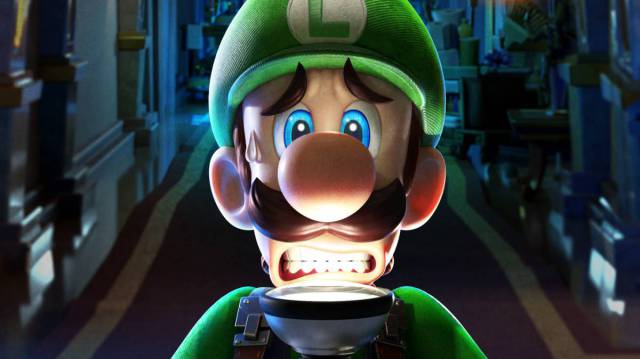
Far from turning it into a useless cartoon and even though the humor of the series mocks the panic that torments Luigi, this turn in mechanics gives it more power than the most majestic of jumps. The vacuum cleaner is a tool to overcome their fears, because they are terrified of ghosts, and face them for the first time. Accustomed to constantly turning to watch that the Boo do not follow him, to flee from them as soon as the occasion occurs, he must now face them with no chance of escape. He could never do it with the jump, but with his faithful Succinants. This mechanic redefines Luigi. Not from his brother, but from himself. Of their fears and their tools to overcome them. It is radically different from the jump, once defining, and gives it a capacity to defeat the Boo that Mario has never counted on. Betting on a proposal so similar to Ghostbusters and therefore more than based on the popular imaginary makes the jump, never better said, more bearable. Aspiring ghosts is a recognizable and much loved job thanks to Peter, Winston and company, so Luigi’s Mansion does not need a cover letter. It also encourages sympathy for Luigi as a tribute to such a beloved franchise. In sum, there are recognizable elements, such as the victory pose – the one that Miyamoto looked so childlike – or Charles Martinet's unspeakable voice, but the mansion presents us with a totally new Luigi in the plot and mechanics.
The naturalness with which the tandem works between Luigi and his spooky franchise is explained, in addition to the intelligent plot and mechanics, because Luigi’s Mansion is a paradigmatic case of design philosophy made in Nintendo. Perhaps the relationship between mechanics and digesis is different from other works, but not in the process of creation. At the orders of Hideki Konno first and Bryce Holiday later, the series starts from a limited and well-defined mechanic that is enriched, rather than by joining dozens of actions and enabling dozens of button combinations, for interactions with the stage and what populates it. It is not about running combos to get a thousand different movements, but to interact with a thousand objects and enemies with a single mechanic. Luigi sucks and expels air and illuminates with his flashlight; little more. However, this is enough and enough to discover secrets under the carpets, get health and bullion and deal with ghosts of all kinds. The decisive factor, the Nintendo label, is to diversify what it interacts with more than the way of interaction, always intuitive. Simple mechanics for complex interactions. In Super Mario Bros., everything is managed from the jump. In Splatoon, through the launch of ink. At Luigi’s Mansion, by using the vacuum cleaner. In all Nintendo, with a direct and easy to digest mechanics.
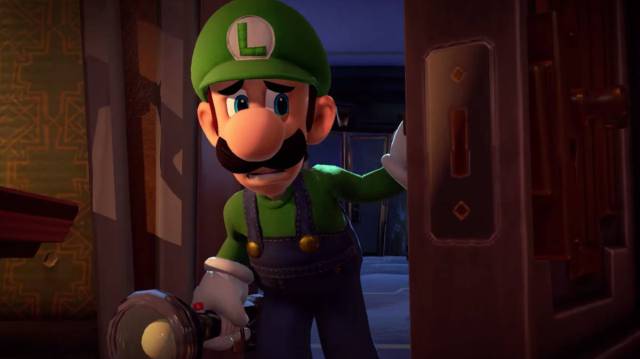
The ghosts, design made in Nintendo
Let's analyze a specific case: that of the enemies. The variety between the spectra is more decisive than including hundreds of hookups and button combinations. The former avoids monotony and diversifies the gaming experience, while the latter tends to hinder it and limit it to a spectrum – excuse the easy joke – of ability too small for Nintendo's interests. That would contradict the blue ocean strategy that gave so much glory during the presidency of Iwata. Any work of the Great N is characterized because the player only needs to internalize a mechanic and deduce, that is the learning and improvement component, how to use it to overcome the different challenges. These, moreover, are gradually introduced in quantity and difficulty to guarantee the user's total familiarity. And Luigi’s Mansion is no exception.
At the beginning a single ghost is introduced, the most basic of all. It is also done in a room wide enough so that Luigi can move around and avoid obstacles without any obstacle. This first encounter works like a sort of training room in a fighting game, a space of some invulnerability in which to get acquainted with the gameplay. The difference, what distinguishes Nintendo in general and Luigi’s Mansion in particular, is that it is integrated here into the work itself. Thus, learning is more organic and intuitive. It is a safe enough space for anyone to overcome the challenge regardless of their ability, more implemented in the design of levels so that it is not perceived as a separate way. As a result, the player assimilates the most basic use of simple mechanics per se while fully immersing himself in the gaming experience. With this, again, the inclusion and immersion of an audience as wide as possible is achieved.
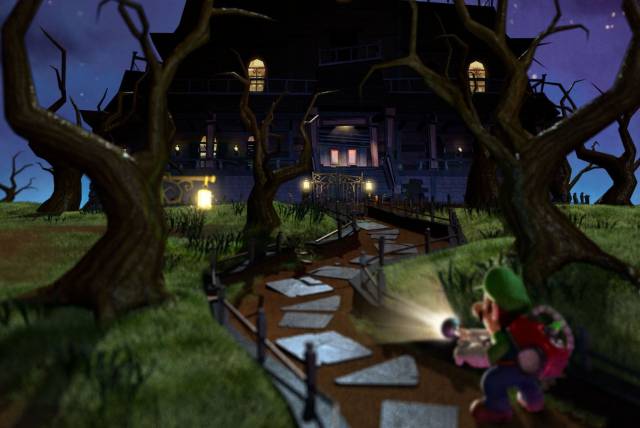
A traditional tutorial would be perceived as something isolated from the experience of rigor for the newest and as a tedious process for the most experienced. Including these lessons in the level design itself makes your learning natural and fun, as in almost all Nintendo titles. Overcome that first obstacle, Luigi’s Mansion adheres to the philosophy of Kyoto and gradually increases the number and diversity of ghosts. Soon more resistant ones appear, with some kind of protection or attack that hinders the capture process. Later the space to deal with them is reduced or the amount of furniture is increased to hinder Luigi's movements. Always from less to more until the type of enemy or the use of the vacuum that is required to end it takes the form of a final boss, a kind of test to validate what has been learned and move on to the next lesson.
Dark Villa, a pocket lesson
The portable nature of Luigi’s Mansion 2 forces to condense this kind of teaching. Therefore, it is easier to understand the above and the design philosophy of the series through its levels. The last two of the Dark Villa, for example. After consolidating the mechanics of aspiration and resolution of puzzles, the fifth phase prepares us for the final enemy. In it we are forced to get rid of the cobwebs that populate the mansion. One of the fundamental lessons in this cleaning process is to absorb a spider web and set it on fire to burn the largest protein silk barriers. No enemies at first, with small spiders – also flammable – later.
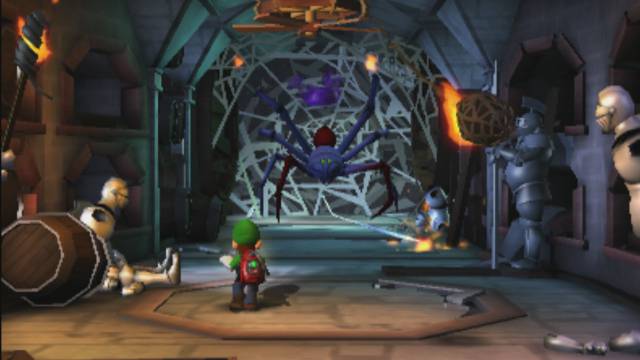
This level shows us the different uses of the cobwebs starting from the fundamental mechanics – vacuuming – and adding layers of complexity as we beat puzzles and rivals. He exercises as training for the boss, but also enjoys his own entity. It is never perceived as a mere tutorial, although the game makes sure we know everything we can do with the cobwebs by the end of this phase. Thus, when we fight against the final boss, a giant and furious spider, defeating it seems intuitive because we are asked to aspire again, to burn cobwebs and to use them against arachnid enemies. The difference is that defeating this boss demands a different sequence of actions and something more complex than defeating his minions, but the tools to achieve it are the same. Again, simple mechanics in favor of increasingly complex interactions. Again, pure Nintendo DNA that the third installment promises to share.
Luigi’s Mansion 2 is the iteration to date that best fits that design conception in which Iwata, Miyamoto and other illustrious Grand N have been lavished for decades. Its mission structure and its world composed of several levels encourages the implementation of ideas in constant renewal, always based on basic mechanics. It is those concepts, which can give rise to dozens of small variations, which characterize the Nintendo label and the creative ambitions of Luigi's Mansion 2. This is how its director, Bryce Holiday, considers this method during an interview with Gamasutra . "An idea goes from experimental to key mechanics when we can think of about ten variations that are fun and fit the main theme of the game," says the head of Next Level Games. In his conversation with Angel Luis Suicasas for El País, Kensuke Tanabe, producer of the third installment, points to Miyamoto as responsible for that way of thinking permeates all Nintendo. “A mechanic is presented in a way, changes in the knot and does it again at the end. You have to ensure that ideas can be used at least three times, ”says Tanabe.
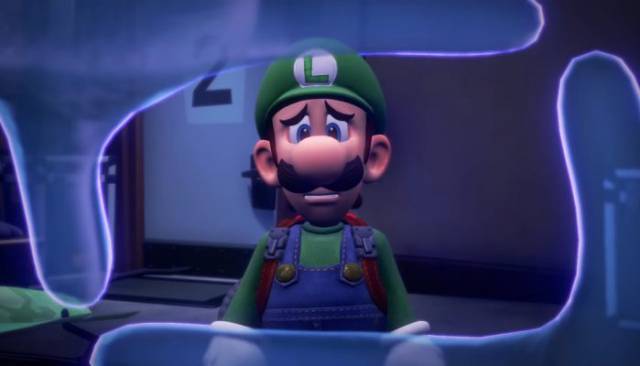
This methodology achieves, as Luigi’s Mansion 2 itself certifies, a wide and consistent variety of interactions. In other words, Nintendo pursues freshness in every game. The bulk of their titles, although united by a key mechanic such as jumping or aspiring, tends to propose and discard ideas constantly. Cleaning the cobwebs in Villa Tenebrosa and defeating the final boss start from the same mechanics, sucking, but they are two completely different tasks in rhythms and difficulty. Sucinaentes is so versatile that it can solve puzzles and win battles with the same function. To it, nuances are added progressively until the interaction becomes complex, a sort of increasingly rich learning, but always intuitive to share an identical basis. That is the touchstone of Luigi’s Mansion 2, more polished than its predecessor in that regard, and that in the third iteration holds more and better playable challenges.
At the gates of the third mansion
Luigi’s Mansion’s formula has gained a broad base of loyal fans thanks to the three pillars analyzed along these lines. Few games, at least on Nintendo, fit so well with the character that stars in terms of script and mechanics. Tiny steps for a plumber and a gloomy environment. A mechanic that singularizes the protagonist with respect to his brother and his own past platform, although familiar for its similarity with a certain film saga. Rhythms that reinforce these differences and show the youngest of the heroes of the Mushroom Kingdom in a completely new and exclusive register. The cohesion between Luigi and the mansion is bidirectional and evident. In addition, it is tacked by a red thread, Nintendo's design philosophy, which polishes even more the diamond that is the binomial between Luigi and such a frightening building.
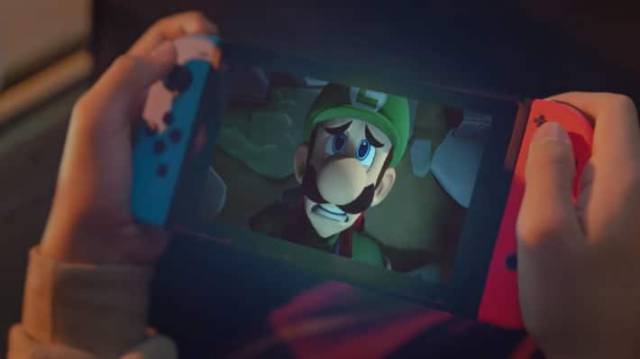
Sucking at the shoulder, Luigi has ceased to be a mere shadow of Mario thanks to that differentiation from character construction, interaction with the environment and level design. Three keys that explain the glory of what began as a demo to exhibit the graphic strength of GameCube, but that has ended up becoming one of the most beloved and original franchises of the Great N. Luigi's Mansion 3, as we pointed out in our final impressions , aims to strengthen the excellent relationship between hero and saga on Nintendo Switch. Come in, Luigi, the mansion is yours.
